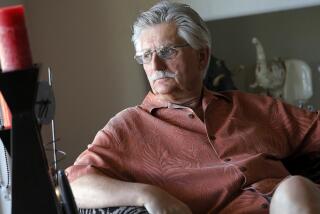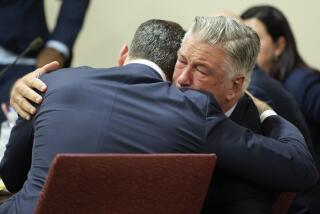Different Trial, Different Verdict
- Share via
After less than three days of deliberations in the wrongful death case, a panel of six men and six women unanimously found defendant O.J. Simpson liable for the murders of Nicole Brown Simpson and Ronald Lyle Goldman. The jury assessed against Simpson $8.5 million in compensatory damages to be paid to Goldman’s anguished family.
Though the Goldmans and Browns probably will never stop grieving for their loved ones, part of their ordeal is over. The broader impact of these murders lingers. Since shortly after the discovery of the grisly Brentwood murder scene in the early hours of June 13, 1994, this case has been about far more than who committed the murders. The yearlong criminal trial, which ended in October 1995 with a Simpson acquittal, and the 4 1/2-month-long civil trial have been about the enduring racial and economic divides in this country; about our national fascination with celebrities and crime, and worries about the jury system.
For the record:
12:00 a.m. Feb. 6, 1997 For the Record
Los Angeles Times Thursday February 6, 1997 Home Edition Metro Part B Page 8 Editorial Writers Desk 2 inches; 39 words Type of Material: Correction
Simpson case claim: Wednesday’s editorial on the Simpson civil trial said the wrongful death claim was filed by the families of both Ronald Goldman and Nicole Brown Simpson. In fact, the wrongful death claim was filed only by the family of Goldman. The Times regrets the error.
The wrongful death claim itself, filed by the Goldman and Brown families, was an effort to seek in civil court the retribution they feel they were denied by the defendant’s acquittal in the criminal trial. A Simpson appeal of Tuesday’s verdict is expected. Superior Court Judge Hiroshi Fujisaki disallowed evidence that the defense considered crucial, including charges of a Los Angeles Police Department conspiracy.
Evidence that wasn’t introduced in the criminal trial, including photographs of Simpson wearing the infamous Bruno Magli shoes and testimony about the freeway chase several nights after the murders, surfaced in these civil proceedings.
The civil jury also heard testimony from Simpson himself, who insisted over and over that he did not commit the murders. But Simpson may have proved to be his own worst enemy by saying he didn’t beat his wife, despite police reports and photographic evidence to the contrary, and by denying having owned the shoes.
On Friday the only black woman on the jury was dismissed at the defense’s request. Judge Fujisaki dismissed the juror for failing to inform the court that her daughter works as a secretary in the Los Angeles County district attorney’s office, which prosecuted Simpson for murder. Fujisaki’s action forced the panel to start its deliberations from scratch. The new jury--nine whites, one Asian, one Latina and one individual who describes himself as half-Asian and half-black--resumed deliberations Friday afternoon. They reached their verdict after listening to several hours’ worth of read-back testimony.
Now that Simpson has been found liable, some of his supporters will of course ask whether the civil verdict is simply payback for the criminal verdict. It’s a disturbing but natural question, given that the reaction to Tuesday’s verdict was the flip side of the reaction to the criminal verdict--with the cheering of the mainly white crowds just as tasteless as the celebrations among blacks after Simpson’s acquittal.
For all the obvious racial implications of Simpson I and Simpson II, we prefer to believe that fundamentally it was the case, not race, that made the difference. The prosecutors in the criminal trial, it’s now clear, made many grievous judgment errors and were out-lawyered; in the civil case, the lawyers for the Goldmans and the Browns put on a stronger and more persuasive case, and they had a lighter burden of proof. The jury so responded. It could just be that the many pronouncements of a terminally ill U.S. jury system were premature indeed.
More to Read
Sign up for Essential California
The most important California stories and recommendations in your inbox every morning.
You may occasionally receive promotional content from the Los Angeles Times.










